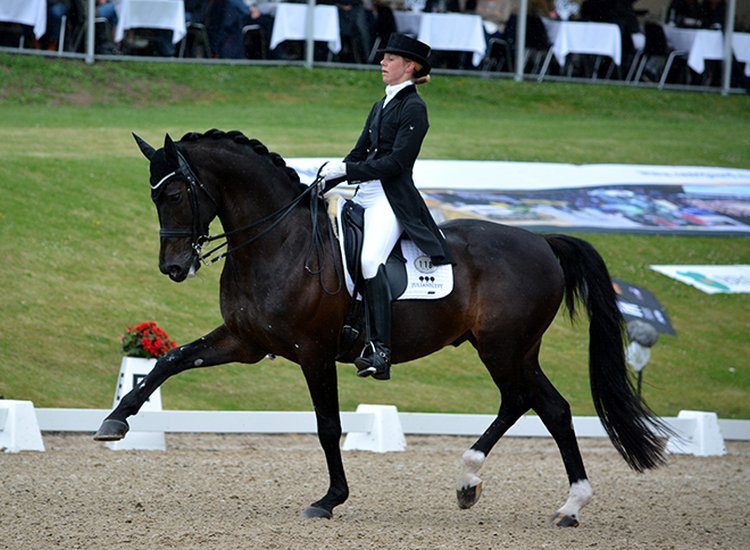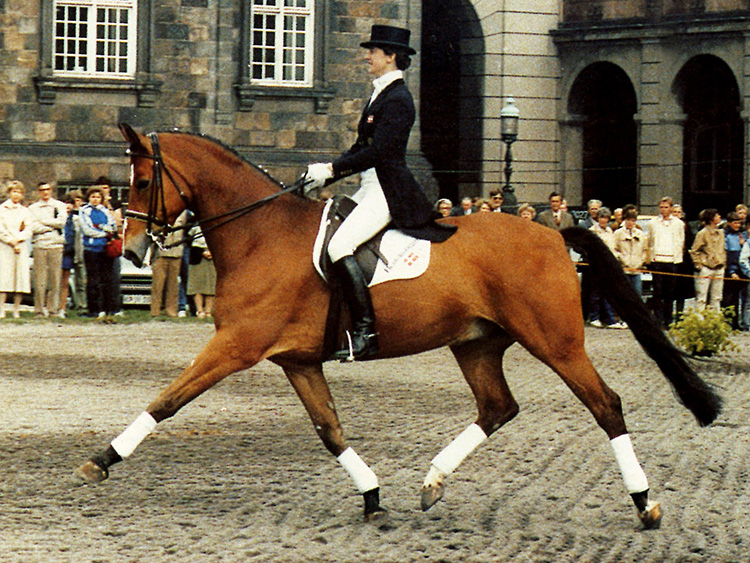Tact is something we riders need so badly.
Rhythm or tact is the first point on the training scale in all types of horse training, whether English, Spanish or Western.
The FN describes it as a regularity of steps and jumps in all gaits.
And with that it is already done. No training point is ridden over as fast as rhythm/tact.
Though tact is so much more than rhythm alone and so important in the training of our horses, in our dealings with our partner horse or with other people.
Tact is an attitude towards life.
How often do you hear riders talk about the importance of collection. Or which lection one must ride in order to train the horse in collection.
Mostly, however, the most basic is missing. A sure rhythm/tact.
So what is rhythm/tact really?
First af all tact in the sense of rhythm is something very individual. Something that is broken much faster than it can be repaired.
Every living being has its own life rhythm.
And depending on the pacemakers of our body (heartbeat, breathing, primary breathing rhythm) each individual has his own rhythm/tact. Adapted to physical strain, gait, stress, etc.
Pacemakers that influence the physiology of muscles and nerves. Those are the generators of our movement.
The rhythm of the movement is then once again a more sensitive structure. Because movement must be learned. By watching (weaving) or trying out. If the body executes a new movement, many sensory and motor nerves coordinate all available muscles in order to carry out the movement. It’s try and error. And this takes a little longer than if a body already knows the movement. Therefore the rhythm/tact is slowed down a little.
With time and repetition, useless nerve tracts are switched off, the necessary muscles for movement execution are reduced and trained. The movement appears supple and becomes powerful. The rhythm/tact changes.
I find the term “letting someone be” so beautiful in this respect. That doesn’t mean to leave someone out of it and ignore them. That means letting someone be as he is right now and nevertheless accept him. Or in relation to our horse: to let it move as it can. Let the horse finish his movement undisturbed. Do not deprive him of the joy of movement.
We throw around terms like:
- the horse should balance itself out or carry itself or
straighten itself out.
In “natural self-positioning” (army service regulation 12).

Mostly there can be no mention about the horse carrying itself. Pushed from behind, pulled from the front, the head upright with the feet paddling and the back sagging. So they stomp oround in the arenas, our horses. No balance or body feeling. No own rhythm.

Letting the horse carry itself means that I have to have patience with my horse, tactfulness. Until it has reached the point where it can carry itself.
But that also means that on the one hand I have to have the physical fitness to move in the horse’s rhythm. I must not tumble into his back like a wet sack and disturb his balance. On the other hand, I need to know what the horse’s movement looks like in the different gaits and lections. Not only the leg movement. The movement of the torso, neck and head are just as important. And as a result, the yielding or giving hand. Only when I know and can feel where the horse moves its head and how head movement and forward movement are related can I give in to the movement.
From a pure, functioning rhythm/tact and a horse’s body in balance – especially under the rider – result the suppleness and the contact. Without rhythm/tact there is no suppleness, without suppleness there is no rhythm/tact. Without rhythm/tact and suppleness there is no connection and in disturbed connection there is no rhythm/tact and no suppleness.
Confusing?
The three training stages rhythm/tact, suppleness and connection are so closely interwoven that no matter where we want to intervene or regulate, we influence the others. These are stages of the horse training, which must develop from the horse itself. The only help we should give it is not to disturb his forward movement. A supple seat, a sensitive hand. Not to impose on the horse a rhythm/tact that corresponds to our needs and makes it easier for us. Not to force it into a posture, but to let our horse find his own posture.
With today’s holding conditions we force so many “tactlessness” on our horse.
We determine when it can eat something, when it can go out on the pasture, how long it has to stay there, which other horses will be with it, how much resting time it gets.
According to a daily rhythm that we find pleasant or organizationally favourable. Have we ever asked our horses for their opinion and rhythm? Difficult if we only see them once a day for a few hours. And not so important for many riders and horse owners.
The horse only has to function when we are with it and want to ride it. Like clockwork. Tick, tack, tact.
We should at least try to handle it tactfully when riding.